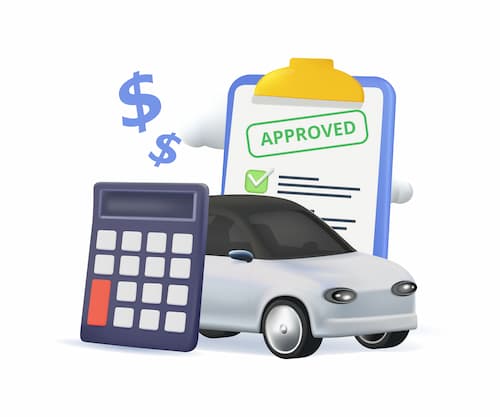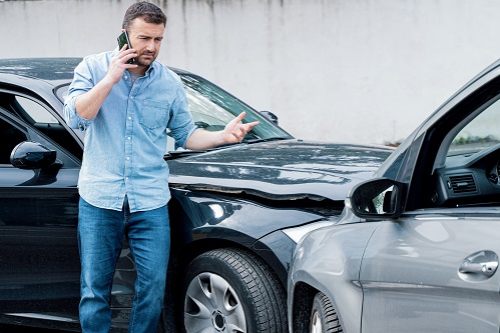- What is an excluded driver?
- Why would I want to exclude a driver?
- Why does another driver's record affect my car insurance rates?
- How do I exclude my teenager from my car policy?
- How can an excluded driver still be a risk to the insurance company?
- What happens if I can't afford insurance unless I can exclude a driver?
- What else can I do to get the driver excluded?
- Is an excluded driver would be covered in an emergency?
- Does the exclusion come off at the end of the policy period?
- Frequently asked questions
What is an excluded driver?
An excluded driver is a licensed driver who lives in your home and has access to your cars, whom you intentionally remove from your auto insurance policy.
If that person uses your car, either with or without your permission, and has an accident, your car insurance won't provide coverage.
Some states prohibit named-driver exclusionsItems that are specifically denied coverage under the terms of an insurance policy. For example, most auto insurance policies exclude coverage for normal wear and tear, drag racing and intentional acts. because they create uninsured drivers, something that puts other people on the road at risk.
Why would I want to exclude a driver?
Most people exclude a driver because that person is causing the cost of their auto insurance to go up, usually by quite a bit. It's often used for a teen driver or for someone with a bad driving record.
When you compare car insurance quotes with or without that driver on your policy, you may see that there's a huge difference. Inexperienced drivers and those with tickets and accidents have the highest rates, and the only way to avoid paying those rates if that person is in your household is to exclude them.
To formally exclude a driver who would otherwise be insured on your policy, though, you’ll need to follow the proper steps with your insurance company.
Why does another driver's record affect my car insurance rates?
Your car insurance is attached to your car, and covers anyone who drives that car with your permission. However, when you allow someone else to drive your car, you're responsible for anything that that happens. That's because car insurance follows the car and not the driver.
Even if the other drive has their own insurance, an accident they have in your car would be covered by your insurance. If that person isn't in your household though, their driving record, like a ticket, won't affect your rates.
Any driver that is in your household will affect your rates, however, That's because they have access to your cars and are considered permissive drivers. Insurance companies will require than any licensed driver in your household be listed on the policy so that they can properly assess the risk of insuring you.
How do I exclude my teenager from my car policy?
It depends on your home state and your insurance company.
Mercury Insurance, based in California, says its named-driver exclusion is popular.
"We have many excluded drivers on our policies, and we have many claims where the excluded driver was driving and we deny coverage," says Kenneth Kitzmiller, the company's vice president and chief underwriting officer.
He says drivers need only fill out a form with an agent, or contact the insurer directly to request a named-driver exclusion.
In other states it may be harder or not even possible. Several states -- Kansas, Michigan, New York, Virginia, and Wisconsin -- don't allow named driver exclusions at all, calling the creation of an uninsured driver antithetical to public policy. Some states prohibit exclusions only for spouses.
And, in states that do permit exclusions, insurers could be reluctant to expose themselves, just in case the excluded driver uses the car anyway.
How can an excluded driver still be a risk to the insurance company?
Exclusions don't always hold up in court, says Toni Matous, an agent with Magnolia Insurance Agency, in Seattle.
"If there's a bad enough accident, the court's going to say, 'You knew this driver was in the house. You can't just with the flip of a pen absolve that… You insured this car, and this is the car that got in the accident,'" Matous says.
"At the very least, the insurance company is going to be spending a lot of time defending itself," she adds. "It's a situation that's not the easiest to maneuver."
What happens if I can't afford insurance unless I can exclude a driver?
Matous, who represents nearly a dozen insurance companies, says insurers typically require the named driver to turn in their license first.
"So the only way they can't be a driver, is if they can't be a driver," Matous says.
And even then, it can take some convincing. "An underwriter will only allow an exclusion to a longtime client, with excellent credit and everything else in order," Matous says. "And they will do it only as a courtesy."
What else can I do to get the driver excluded?
Separate the problem driver as much as possible. Roommates, for example, are more easily excluded, if they own their own cars and have their own insurance. Treat a family member the same way.
"Get the car out of the insured’s name. Have it in the kid's name," Matous says. "Have the kid buy his own insurance."
Matous recommends that people contact an independent broker to review options when there's a problem driver before calling the insurer directly.
"You never want to be the person to call and say, 'Hey, I've got this problem driver,' because the usual response will be the insurance company will cancel your policy," she says.
Is an excluded driver would be covered in an emergency?
No, and this is a common misperception. Even if the excluded driver takes the wheel in a medical emergency, the insurance company will argue it doesn't have to pay out in the event of an accident. You would personally be on the hook.
"I obviously don't recommend excluding anybody who has any potential possibility of driving any vehicle," Kitzmiller. says
Does the exclusion come off at the end of the policy period?
No. The typical exclusion form notes that the agreement is binding not only for the current policy periodThe time period during which an insurance policy is in force. An auto insurance policy period begins and ends at 12:01 AM in the local time zone. but applies to “all future renewals, reinstatements and changes made to the policy unless mutually agreed to by the insurance company and named insured.”
That means to get the excluded driver back on your policy, you’ll have to ask your insurance company for its approval to add the individual back on as a covered driver. Hopefully, the person is no longer a high-risk driver at this point and will be accepted by your insurer. If not, you’ll need to shop around to find an insurance company that will.
Frequently asked questions
What happens if an excluded driver gets in an accident?
If an excluded driver gets in an accident while operating the insured vehicle, the insurance company may deny coverage for any resulting damages or injuries. Excluded drivers are explicitly listed on the insurance policy as individuals who are not covered to drive the insured vehicle. So, any accidents involving them could result in the insurer refusing to pay for damages, leaving the policyholder responsible for covering the costs themselves.
Can an excluded driver drive my car?
An excluded driver cannot legally drive your car if they are specifically listed as excluded on your insurance policy. This means they are not covered by your insurance if they drive your car, and if they get into an accident, your insurance company may refuse to pay for damages. It's important to follow the terms of your insurance policy to avoid complications and potential financial liabilities.
 As a general rule, insurance companies require that every licensed driver be listed on your policy. However, it's sometimes possible to use a named driver exclusion to specifically remove someone from your policy.
As a general rule, insurance companies require that every licensed driver be listed on your policy. However, it's sometimes possible to use a named driver exclusion to specifically remove someone from your policy.


